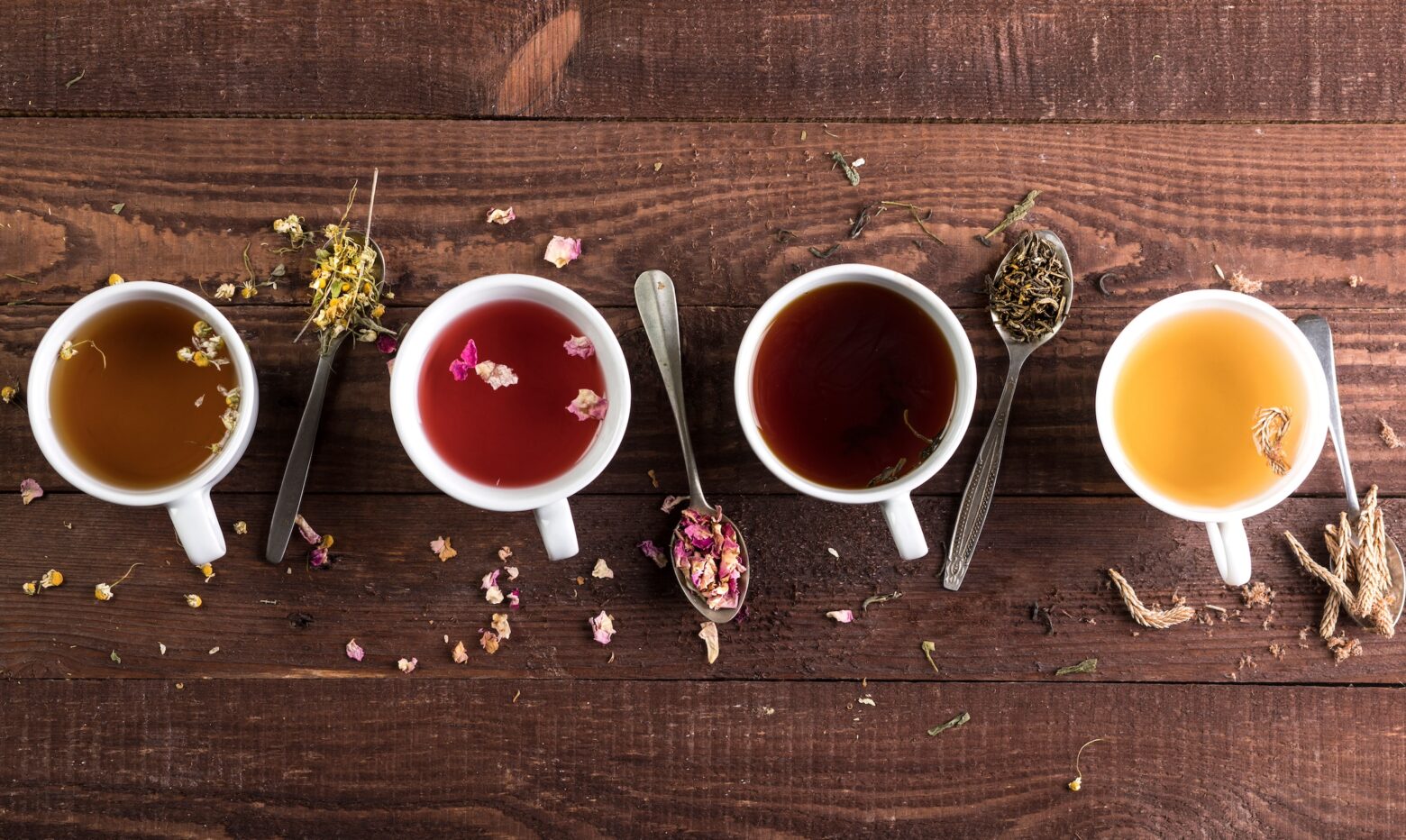Coffee Alternatives to Consider on The Paleo Diet®

Coffee is what makes many of us excited to get up each morning. It’s a part of many morning routines and can be included in a Paleo diet for certain people. However, eliminating coffee for a short period or even the long term is recommended for some. Here are some coffee alternatives to swap for your morning cuppa.
Why Would Anyone Want an Alternative to Coffee?!
There are several reasons someone might consider alternatives to coffee. Doctors often advise pregnant or nursing women to limit caffeine to under 200 mg due to potential effects on the baby. [1] Those with cardiovascular risk factors may need to reduce caffeine as it can temporarily raise blood pressure and lead to palpitations. [2,3]
Anyone struggling with sleep issues might also want to cut coffee, as caffeine can disrupt sleep patterns and contribute to insomnia. [4] Also, since coffee is acidic and can irritate the stomach, those experiencing digestive issues may benefit from switching to less irritating beverages. [5]
6 Coffee Alternatives
Solvent-free decaf coffee can be an occasional option for those wanting to keep the coffee without the major caffeine hit. However, there are also many coffee alternatives to explore, both caffeinated and caffeine-free.
Black Tea
Black tea comes from the Camellia sinensis plant and has less caffeine than coffee (40-70 mg vs. 95-200 mg). It contains polyphenols like theaflavins and thearubigins, which can improve insulin sensitivity and support a healthy weight. [6] The flavor is robust, and depending on the variety, it can taste malty, citrusy, earthy, spicy, or floral.
Caffeine content: 40-70 mg, depending on steeping time. Steep for 2 minutes to keep caffeine lower.
Purchase considerations: When purchasing, choose organic or brands third-party tested for toxins, heavy metals, and pesticides. Look for USDA Organic and fresh, recently harvested tea. Opt for loose tea over bags, as tea bags may leach microplastics when steeped in hot water. [7]
How to prepare: Boil water (212°F) and pour over a tea bag or 1 teaspoon of loose tea. Steep for 3-5 minutes, then strain if needed. Enjoy plain or with nut milk, a small amount of honey, or lemon.
Who should exercise caution: Pregnant/nursing women should limit consumption to 1-2 cups daily due to the caffeine content. Those with an iron deficiency should be cautious, as black tea contains tannins, which can reduce iron absorption. [8] Those prone to kidney stones and other oxalate-related issues should limit intake due to oxalates in tea. [9]
RELATED RECIPE: Hot Toddy Mocktail
Green Tea
Green tea also comes from the Camellia sinensis plant but is less oxidized than black tea and has less caffeine. Its famous antioxidant EGCG and the calming amino acid L-theanine may protect the nervous system. [10] The flavor is delicate and fresh, with Japanese green tea having grassier notes and the Chinese varieties slightly nutty.
Caffeine content: 20-45 mg, depending on type and brewing time.
Purchase considerations: Look for organic or third-party tested teas, ideally USDA Organic certified. Fresh, loose tea is best to avoid microplastics from tea bags.
How to prepare: Heat water to 175-185°F and pour over a tea bag or 1 teaspoon of loose tea. Steep for 2 to 3 minutes to avoid bitterness. Strain if necessary. Enjoy plain or with honey or lemon.
Who should exercise caution: Pregnant/nursing women should limit intake due to caffeine. Like black tea, it has tannins that may inhibit iron absorption, so those deficient should be careful.
RELATED RECIPE: Frozen Peach Green Tea
Matcha
Matcha is a powdered green tea with a rich, earthy, slightly sweet flavor. It’s high in antioxidants and provides a gentler caffeine boost than coffee, thanks to its L-theanine content.
Caffeine content: 60-80 mg per serving, more than regular green tea because you consume the whole leaf.
Purchase considerations: Look for USDA Organic or brands third-party tested for toxins and choose a tea with a recent harvest date for freshness and optimal flavor.
How to prepare: Sift 1-2 teaspoons into a bowl. Heat 2 ounces of water to 175°F (do not boil). Pour the hot water over the matcha and whisk vigorously, using a bamboo whisk, until frothy. Add 6 ounces of hot water or nut milk, whisking again to blend. Enjoy as is or sweetened with a Paleo-approved amount of honey or maple syrup.
Who should exercise caution: Matcha can contain almost as much caffeine as coffee and is often served as a double serving. Pregnant/nursing women and those sensitive to caffeine should limit intake. People on blood thinners should be cautious due to matcha’s vitamin K content, and those with iron deficiency should be aware of tannins. [11]
RELATED RECIPE: Golden Milk Matcha Latte
Yerba Maté
Yerba maté is made from the dried leaves of a South American plant of the same name. It is traditionally sipped from a gourd. It has a grassy, earthy flavor with a slightly bitter finish and provides balanced energy with less caffeine. [12]
Caffeine content: 30-50 mg per serving, up to 75 mg.
Purchase considerations: Choose organic yerba maté from regions like Argentina, Brazil, or Paraguay. Look for brands third-party tested for contaminants.
How to prepare: Fill a gourd or cup about halfway with leaves. Heat water to 160-180°F and pour over the leaves. Allow to steep until drinkable temperature. Refill with hot water until the flavor fades.
Who should exercise caution: Pregnant/nursing women and those on blood thinners should limit intake. Drinking yerba maté at high temperatures may be linked to esophageal cancer. [13]
RELATED RECIPE: Iced Lemon-Strawberry Yerba Maté
Mushroom “Coffee”
Mushroom coffee blends instant coffee with powdered medicinal mushrooms like lion’s mane, chaga, or reishi, offering adaptogenic and immune benefits. It cuts back on caffeine yet boosts energy and feelings of well-being. [14]
Mushroom coffee doesn’t taste like mushrooms. It has an earthy, slightly nutty flavor that varies based on the blend. As a standalone ingredient, chaga makes an excellent zero-caffeine coffee alternative due to its rich, earthy flavor.
Caffeine content: 30-50 mg, depending on the coffee-to-mushroom ratio.
Purchase considerations: Choose organic brands with third-party testing for purity. Look for dual extraction (water and alcohol) for potency.
How to prepare: Heat water to 190°F for instant coffee or 88°F for ground coffee. Brew like regular coffee or mix instant powder with hot water.
Who should exercise caution: Pregnant/breastfeeding women and those with mushroom allergies should avoid it. While generally safe in moderation, certain mushrooms (like reishi or cordyceps) may not be safe during pregnancy. Functional mushrooms may also interfere with medications like immunosuppressants and blood thinners. [15]
RELATED RECIPE: Cacao Reishi Latte
Chicory Root “Coffee”
Roasted chicory root is a caffeine-free option that tastes similar to coffee and supports digestive health as a prebiotic. [16] It’s often a key ingredient in coffee alternative blends.
Caffeine content: None
Purchase considerations: Look for USDA Organic or third-party tested products for purity. Ensure the ingredient list contains only chicory root without any additives.
How to prepare: Boil water (212°F) in a pan. Add 1-2 tablespoons of ground chicory root, reduce heat, and simmer for 3-5 minutes. Strain and enjoy plain or with nut milk, a small amount of honey, or maple syrup.
Who should exercise caution: Chicory root may stimulate uterine contractions, so it’s unsafe during pregnancy. Avoid chicory if allergic to related plants (Asteraceae). It can exacerbate gallbladder issues and may interfere with medications like blood pressure drugs or blood thinners. [17]
Final Thoughts
Coffee alternatives offer a diverse range of flavors, health benefits, and energy profiles. They can be great for those who want to reduce caffeine intake, seek specific health benefits, or simply enjoy new beverage experiences. Which coffee alternative you choose depends on personal health needs, taste preferences, and lifestyle pursuits.
References
- American Pregnancy Association. Caffeine and Pregnancy [Internet]. American Pregnancy Association. 2012. Available from: https://americanpregnancy.org/healthy-pregnancy/is-it-safe/caffeine-and-pregnancy/
- Teramoto M, Yamagishi K, Muraki I, Tamakoshi A, Iso H. Coffee and Green Tea Consumption and Cardiovascular Disease Mortality Among People With and Without Hypertension. Journal of the American Heart Association. 2023 Jan 17;12(2).
- de Souza JG, Del Coso J, Fonseca F de S, Silva BVC, de Souza DB, da Silva Gianoni RL, et al. Risk or benefit? Side effects of caffeine supplementation in sport: a systematic review. European Journal of Nutrition. 2022 Apr 5;61(8):3823–34.
- Clark I, Landolt HP. Coffee, caffeine, and sleep: A systematic review of epidemiological studies and randomized controlled trials. Sleep Medicine Reviews [Internet]. 2017 Feb;31:70–8. Available from: https://www.sciencedirect.com/science/article/pii/S1087079216000150
- Taraszewska A. Risk factors for gastroesophageal reflux disease symptoms related to lifestyle and diet. Roczniki Państwowego Zakładu Higieny. 2021;72(1):21–8.
- Anderson RA, Polansky MM. Tea Enhances Insulin Activity. Journal of Agricultural and Food Chemistry. 2002 Nov;50(24):7182–6.
- Ali T, Habib A, Muskan F, Mumtaz S, Shams R. Health risks posed by microplastics in teabags; microplastic pollution; a truly global problem. International Journal of Surgery. 2023 Mar 17;Publish Ahead of Print.
- Delimont NM, Haub MD, Lindshield BL. The Impact of Tannin Consumption on Iron Bioavailability and Status: A Narrative Review. Current Developments in Nutrition [Internet]. 2017 Jan 19;1(2):1–12. Available from: https://www.ncbi.nlm.nih.gov/pmc/articles/PMC5998341/
- Charrier MJ, Savage GP, Vanhanen L. Oxalate content and calcium binding capacity of tea and herbal teas. Asia Pacific Journal of Clinical Nutrition. 2002 Dec;11(4):298–301.
- Camfield DA, Stough C, Farrimond J, Scholey AB. Acute effects of tea constituents L-theanine, caffeine, and epigallocatechin gallate on cognitive function and mood: a systematic review and meta-analysis. Nutrition Reviews. 2014 Jun 19;72(8):507–22.
- Reto M, Maria Luísa Figueira, Filipe H, C. Ramos Almeida. Analysis of vitamin K in green tea leafs and infusions by SPME–GC-FID. 2007 Jan 1;100(1):405–11.
- Lutomski P, Goździewska M, Florek-Łuszczki M. Health properties of Yerba Mate. Annals of Agricultural and Environmental Medicine. 2020 Apr 3;
- E;Brennan S. Maté consumption and the risk of squamous cell esophageal cancer in uruguay. Cancer epidemiology, biomarkers & prevention : a publication of the American Association for Cancer Research, cosponsored by the American Society of Preventive Oncology [Internet]. 2024 [cited 2024 Oct 6];12(6). Available from: https://pubmed.ncbi.nlm.nih.gov/12814995/
- Chang ST, Wasser SP. Current and Future Research Trends in Agricultural and Biomedical Applications of Medicinal Mushrooms and Mushroom Products (Review). International Journal of Medicinal Mushrooms. 2018;20(12):1121–33.
- Shane-McWhorter L. Reishi [Internet]. Merck Manual Consumer Version. Merck Manuals; 2024 [cited 2024 Oct 6]. Available from: https://www.merckmanuals.com/home/special-subjects/dietary-supplements-and-vitamins/reishi
- Pouille CL, Ouaza S, Roels E, Behra J, Tourret M, Molinié R, et al. Chicory: Understanding the Effects and Effectors of This Functional Food. Nutrients [Internet]. 2022 Jan 1;14(5):957. Available from: https://www.mdpi.com/2072-6643/14/5/957/htm
- Ignat MV, Coldea TE, Salanță LC, Mudura E. Plants of the Spontaneous Flora with Beneficial Action in the Management of Diabetes, Hepatic Disorders, and Cardiovascular Disease. Plants. 2021 Jan 23;10(2):216.
Betsy Schroeder
Betsy does research and writing for a few different websites in the natural health field after taking Masters level courses in Nutrition & Functional Medicine through the University of Western States.
More About The Author




